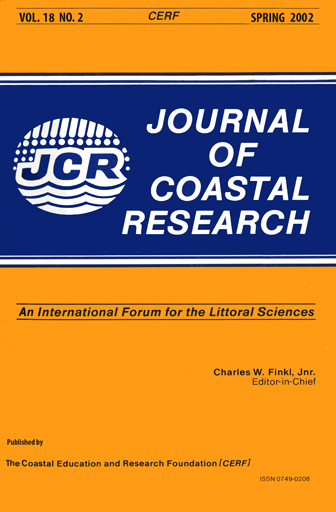Microfacies of Spaanse Water Bay, Curacao (Netherlands Antilles), with Special Reference to Benthic Foraminifera
Keywords:
Microfauna, sediments grain -size, cluster analysisAbstract
Fifty-one sediment samples from a shallow (<15m) bay of Curacao, Spaanse Water, were clustered based on their components and grain size. Three main biofacies, in geographically distinct areas of the bay, are recognized. One, the Halimeda Facies, dominated by the remains of the calcareous alga Halimeda (70%,), is related to coarse sediments (coarse and fine sand) and frames the coastal, shallow areas of the bay. Another, the Ostracod Facies, shows a high ostracod (46%), echinoid spine (11%) and foraminifer (17% ) content, and is related to fine sediments , which cover the central basin, the eastern part and the channel of the bay. The third, Gastropod-Halimeda Facies, is restricted to the western part of the bay and characterized by a poor microfauna and a relatively high percentage of gastropods (20%). It comprises coarse sediments with a relative scarcity of the finest material and with common dark, coated grains. The Gastropod-Halimeda Facies is shown to be a "relict" of the rich Halimeda Facies. Its distribution coincides with an area of intense boating activity. Benthic foraminifera are widely distributed and make up 4- 30% of the skeletal components. The assemblages are often related to the recognized facies. Increased abundances of the large, algal symbiont-bearing species as well as Elphidium poeyanum and E.discoidale are associated with the Halimeda Facies, while Ammonia tepida, Nonion grateloupii, Reussella simplex and small, thin-shelled miliolids dominate the foraminiferal assemblage of the Ostracod Facies. The distribution pattern of foraminiferal assemblages appears to be related primarily to the nature of substrate (grain size) and light penetration (depth). The highest abundance (50%) of Ammonia tepida is found in mangrove areas, where samples contain vegetable matter.


